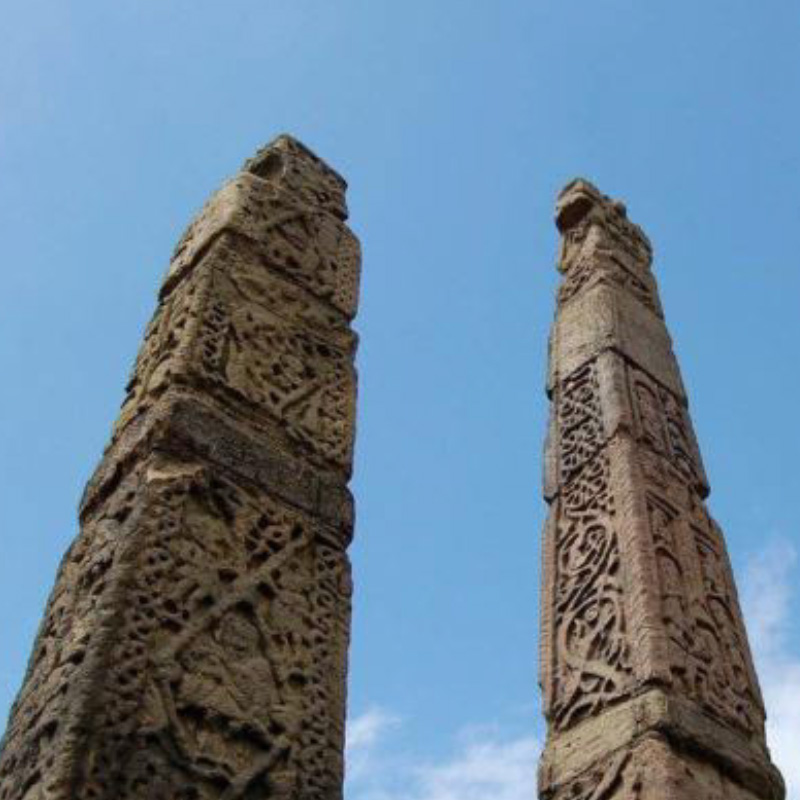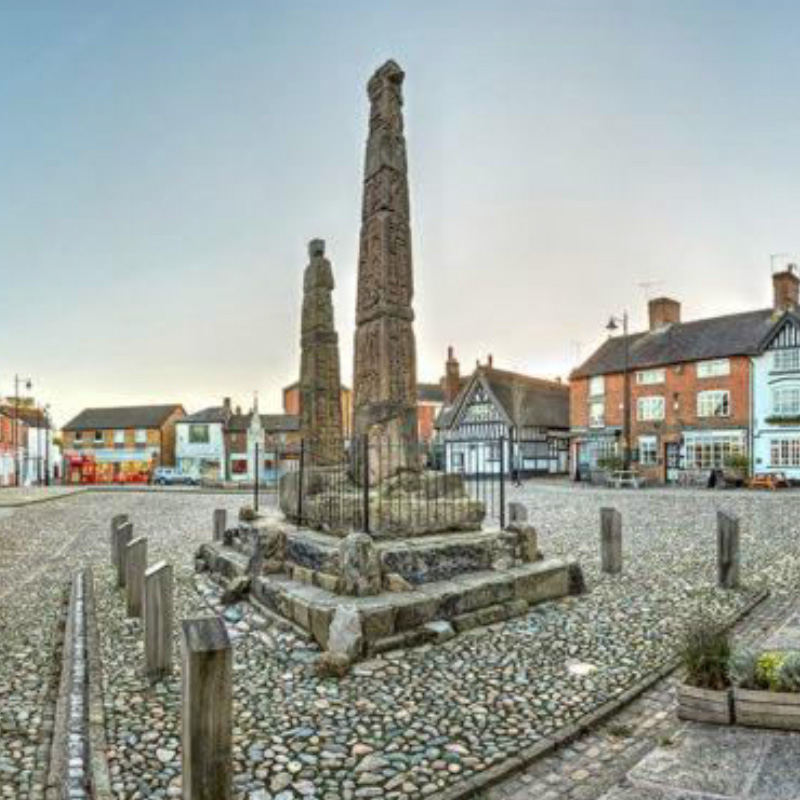Ancient Saxon Crosses
Sandbach’s two sandstone crosses are amongst the finest surviving examples of Anglo-Saxon sculpture, and the most important monuments linked to the Saxon kingdom of Mercia. They can be dated to the early 9th century when Sandbach lay at the centre of a large early Saxon parish, possibly the site of a minster church linked to the powerful Bishops of Lichfield.
The crosses were originally brightly painted and adorned with jewels and metalwork and stood as powerful symbols of church authority. The carvings draw heavily on the motifs and techniques of metalworking, reflecting the prestige of the jeweller in Anglo-Saxon society. There are also references to Scottish and continental figural art in the biblical scenes which adorn the sides.
The two crosses are first noted in the market place in 1585 soon after the town was granted a charter for two fairs and a weekly market. In the early 17th century they were torn down by Puritans opposed to religious imagery and the pieces were dispersed. The shafts were reassembled by the antiquary George Ormerod in 1816, using similar sandstone to replace the missing sections.
Five fragments of other smaller monuments lie in St. Mary’s churchyard.


Investigating the Ancient Crosses
Sandbach is widely known for its famous Saxon Crosses, which are recognised as one of the finest Saxon monuments in Britain. English Heritage cares for the two sandstone structures situated in the picturesque cobbled Market Square.
The Crosses depict intricate carvings and were produced at a time from which little or no documentary evidence has survived. They have been the source of much fascination and the subject of very many books. Theories abound to explain how and why they were created, with some being more credible than others. Dr. Jane Hawkes book “The Sandbach Crosses” was written with the support of English Heritage and is considered the greatest authority on Sandbach’s Saxon Crosses.
Dr. Hawkes has studied the iconography of the carvings in great detail and has concluded the larger cross was carved in the first half of the ninth century and the smaller cross was completed slightly later, in the middle of the ninth century. The decoration on both structures suggests the presence of an ecclesiastical centre in the Sandbach region that expressed its authority through the production of large-scale stone monuments proclaiming the Christian message. The Crosses would originally have been brightly painted and decorated with jewels and metal inserts.
The first documentary reference to the Sandbach Crosses is by William Smith, a Herald, in 1585 when he describes them as being present in the marketplace. It is assumed that they were broken up by Puritan iconoclasts in the seventeenth century, with fragments scattered over a wide area. The larger sections were found as far away as Oulton and Tarporley, whilst smaller pieces were found on various sites in Sandbach. They were eventually re-erected on their original site in 1816 under the direction of Dr. George Ormerod, the Cheshire historian.

